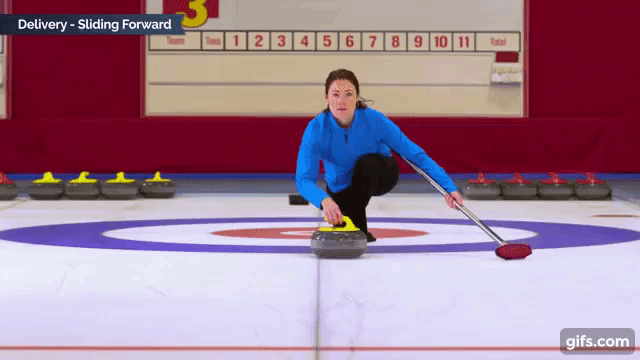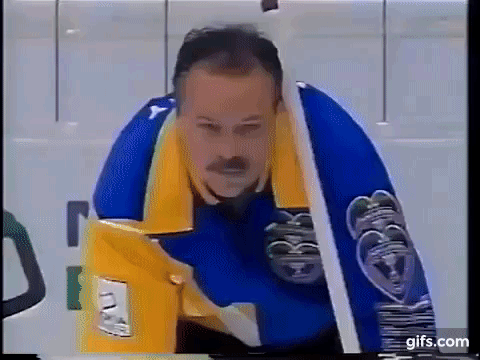Hear more about this subject and other curling topics from Jonathan Havercroft on Rocks Across the Pond: A Curling Podcast available on iTunes, Google Play, Stitcher, and TuneIn
On the latest episode of our podcast we had our first guest: Mark Ngo from Oklahoma Curling Club. We asked Mark if he had any questions about curling for our coaching segment, and it turns out he had a lot! I think his questions boil down to one big issue: does a curler’s delivery have to imitate the curling manual?

The by-the-manual curling delivery
Anyone who has taken a Level 1 curling coaching course (regardless of the country) knows that there is a standard way of teaching the curling delivery: no back-swing, flat foot slide, broom under the arm at a 45 degree angle, toe of sliding foot turned out, etc. Anyone who has watched a curling match on TV or walked into any curling club on the planet will quickly notice that very few curlers from the beer league to PyeongChang throw the way they tell us to in the coaching course.
So what gives? When should we listen to the Level 1 curling course guidelines, and when should we ignore them?
The short answer is that the level 1 curling course teaches a standard delivery aimed at getting a novice curler to throw the stone as quickly as possible with as technically sound a delivery as possible in as short a time as possible. So it is best when coaching and playing to at least start with that delivery.
But I prefer to think of these more as delivery guidelines than hard or fast rules. Many people will not be able to get into the prescribed position simply because of body shape, size or flexibility. Some people might get into a very different slide position than the one the manual prescribes.
To pick one example Mark raised: is the toe-tuck delivery bad? The toe-tuck delivery is not covered in any coaching manual, but it is relatively common amongst elite curlers, especially curlers from Manitoba. A lot of world champions have used the toe-tuck delivery. So obviously it can be that bad.
 Mark Ngo doing the Okie Toe-Tuck
Mark Ngo doing the Okie Toe-Tuck
Curling manuals do not teach the tuck delivery because it is associated with knee injuries. By putting more body weight on the toe of the foot and bending the knee to a more extreme angle, the toe tuck puts more strain on the knee ligaments and can lead to more knee injuries.
I’m not a doctor or a physiotherapist, so I can’t answer the question of whether or not the tuck is actually more dangerous. If, however, the toe tuck delivery hurts your knee when you do it, then the delivery probably isn’t for you. But let’s say your knee doesn’t hurt, then why might you want to do it? Most people toe tuck to get lower to the ice. In the conventional flat foot slide, turning the sliding foot out creates space in the hips that allows the body to drop to the ice, which in turn helps with the balance of the slide (lower center of gravity) and the aim (lowers the eye to behind the stone).

Jeff Stoughton's classic tuck delivery
The toe tuck does this too, but instead uses the ankle and knee joint as well as the hip joint to get the body into a low sliding position. How low a curler is able to get in either sliding style is going to depend on how flexible they are in each of those joints. In terms of the slide itself, the tuck also has the advantage of having less surface area touch the ice, making for less friction, and so a faster slide over all.
The big disadvantage with a tuck slide is that the curler is more likely to fishtail (i.e. the trailing leg can drift off to one side or other) which in turn can throw the curler offline. So if you do use a tuck slide you need to have someone check to make sure you are not creating other problems with your delivery.
It is the same principle for the other questions Mark asked about broom placement and the trunk lift as well as any other delivery characteristic that deviates from what the manual teaches.

Hard to argue with Randy Ferbey's six Briers
There is nothing wrong with delivering a stone that way, but the more a delivery deviates from the standard delivery, the more likely a curler is to introduce a problem into their delivery that will negatively impact how the stone is thrown. But very few people, especially those who take up curling later in life, have the flexibility and balance to slide exactly how it is taught in the curling manual. This is where the coach needs to adjust what is taught in the manual to fit the needs and abilities of each curler.